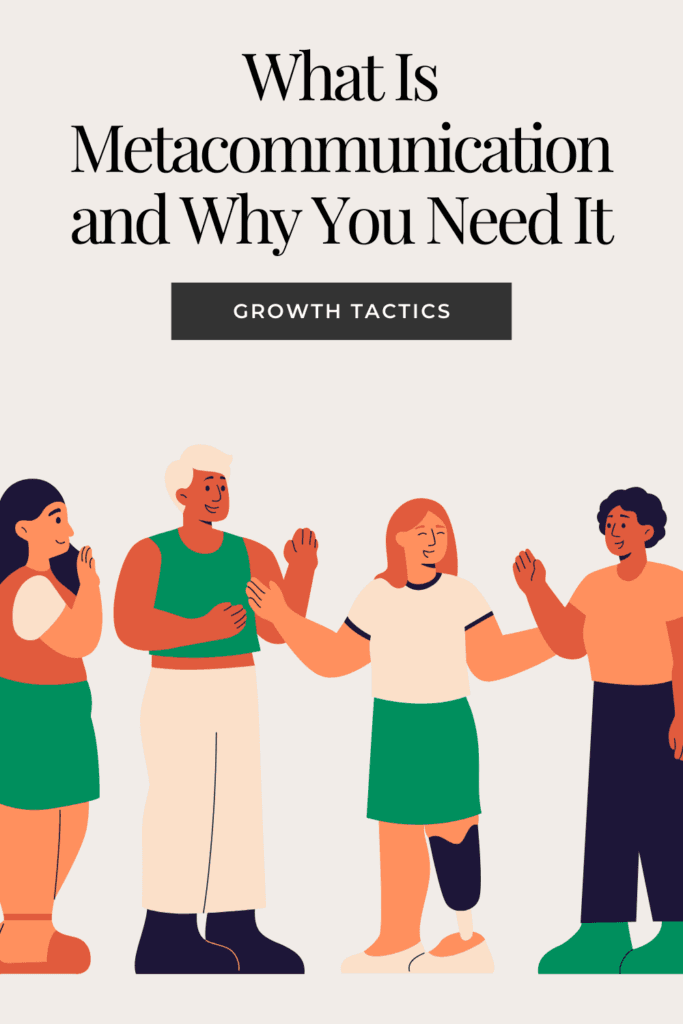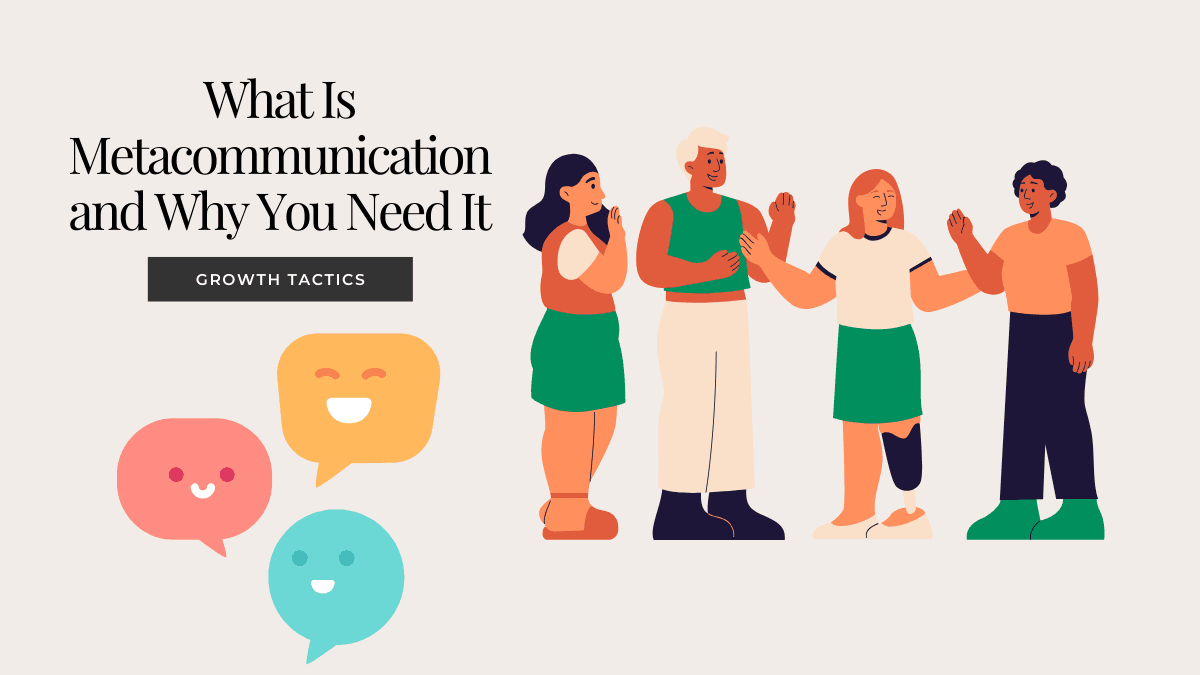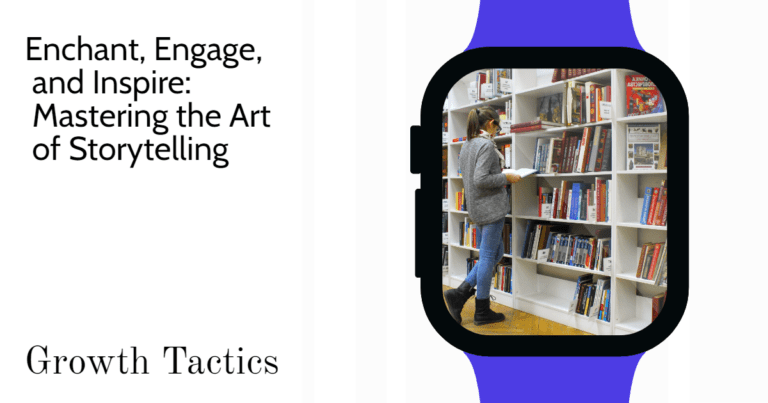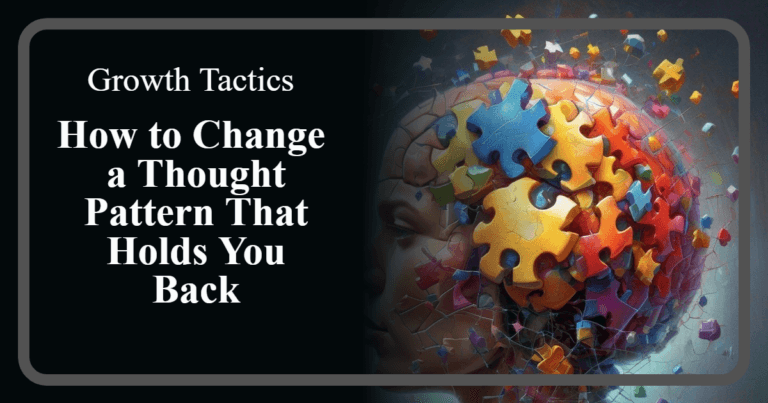Have you ever walked away from a conversation feeling like you missed something important? You heard the words, but there was more to it. That’s metacommunication at work. The hidden language that great communicators use to connect, inspire, and solve problems.
It’s not just about what you say. It’s how you say it, your body language, and even what you don’t say. These silent signals can speak volumes.
Metacommunication isn’t just for CEOs or public speakers. It’s a skill you can use every day to become a better communicator. Whether you’re leading a team or talking to a friend, understanding this powerful tool can change the game for you.
So, are you ready to unlock your own communication superpower? Let’s explore metacommunication together and find out how you can use it in your own way.
Jump To Section
What is Metacommunication?
Metacommunication is like a secret language we all use without realizing it. It’s the hidden message behind our words. Think of it as the “how” of what we say, not just the “what.”
When we talk, we don’t just use words. We use our tone, our body language, and even the pauses between words. All of these things send messages. That’s metacommunication.
Let me share an example from my days of supervising. I once had an employee who always said, “Sure, no problem” when I gave her a task. Sounds great, right? But her slumped shoulders and quiet sigh told a different story. Her words said yes, but her body language said she was overwhelmed.
This is metacommunication in action. The literal meaning of her words was positive, but the real message was hidden in how she said it.
You use metacommunication every day, even if you don’t know it. When you roll your eyes at a bad joke or smile while giving criticism, that’s metacommunication. It’s the extra layer that gives our words context and deeper meaning.
Understanding metacommunication can make you a better leader, friend, and problem-solver. It helps you pick up on what people really mean, not just what they say.
So next time you’re in a conversation, pay attention to more than just the words. Listen to the tone, watch the body language, and trust your gut. You might be surprised at what you discover!
Remember, everyone conveys their message differently. Use this knowledge to understand others better, but also to express yourself more clearly. That’s the real power of metacommunication.
The Building Blocks of Metacommunication
Let’s break down metacommunication into parts we can all understand and use. Think of these as tools in your communication toolbox. You probably use some of them already without knowing it. Let’s explore how you can use them even better.
Nonverbal Cues: Your Body Speaks Volumes
Your body tells a story, even when you’re not saying a word. It’s like it’s own form of communication. As a leader, I’ve learned to pay close attention to these silent signals:
- Body language: Are your arms crossed? Are you leaning in or away?
- Facial expressions: A smile, a frown, or a raised eyebrow can change everything.
- Posture: Standing tall or slouching sends different messages.
- Eye contact: Are you making eye contact or looking away?
Try this: Next time you’re in a meeting, watch how people sit or stand. You might be surprised at what you learn from the non-verbal cues!
Verbal Signals: It’s Not Just What You Say, But How You Say It
Words are powerful, but how we say them can be even more important in verbal communication. Here’s what to listen for:
- Tone of voice: Are you excited, bored, or angry?
- Pace: Speaking fast might show excitement or nervousness.
- Volume: A whisper or a shout can change the whole message.
Remember a time when someone’s tone didn’t match their words? That’s metacommunication at work.
Context: Time and Place Matter
Where and when you say something can be just as important as what you say. Think about:
- Setting: A casual chat over coffee is different from a formal board meeting.
- Timing: Good news on a bad day might not be received well.
I once gave important feedback right before lunch. My team was hungry and distracted. Lesson learned: timing matters!
Use these building blocks to improve your communication. Pay attention to how you use them, and how others do too. You’ll be amazed at how much clearer your messages become. Remember, everyone communicates differently. Find what works best for you and your purpose.
Mastering the Art of Metacommunication
We all want to be better communicators. It’s a key skill in leadership and life. Let’s walk through some steps to help you master metacommunication. Remember, this is your journey. You’ll find what works best for you.
Step 1: Become aware of your own metacommunicative signals
Start by looking in the mirror. What do you see? How do you stand? What does your face say when you’re happy, sad, or angry? These are your metacommunicative signals.
Try this: Ask a friend to watch you talk. What do they notice about your body language? You might be surprised!
Step 2: Practice active listening and observation
Open your ears and eyes wide. Don’t just hear words, listen to the tone. Don’t just see people, observe their body language.
In my early days as a leader, I missed a lot of cues. Now, I watch for crossed arms, fidgeting, or eyes that wander. These tell me more than words ever could.
Your task: In your next conversation, focus on what isn’t being said. What do you learn?
Step 3: Align your verbal and nonverbal communication
Make sure your words and body are telling the same story. If you say “I’m excited” with a frown and slumped shoulders, people won’t believe you.
I once told my team “Great job!” after a tough project. But my tone was flat and I didn’t smile. They felt confused and unappreciated.
Challenge yourself: Next time you give praise, make sure your face and voice show it too.
Step 4: Adapt your style to different situations and people
One size doesn’t fit all in communication. You might need to be formal in a board meeting but casual with your friends. Learn to shift gears.
I use a different communication style with each of my kids. My middle son responds to direct talk. My oldest prefers a softer approach. Both work, just in different situations.
Your mission: Notice how you change your communication style in different settings. Do you need to adjust more?
Remember, mastering metacommunication takes time and practice. Be patient with yourself. Keep working at it. You’ll see improvements in your leadership and relationships. It’s all about finding your unique voice and using it with purpose.
Common Metacommunication Pitfalls and How to Avoid Them
We all make mistakes when we communicate. It’s part of being human. But some errors can really mess up our message. Let’s look at some common pitfalls and how to avoid them.
Mixed signals: When words and body language don’t match
Have you ever told someone “I’m fine” while frowning? That’s a mixed signal. Your words say one thing, but your body says another. People usually believe what they see, not what they hear.
Try this: Next time you speak, check if your face and body match your words. If not, take a deep breath and realign them.
Misinterpreting sarcasm or irony
Sarcasm can be funny, but it’s risky. Not everyone gets it, especially in writing. What you think is a joke might hurt someone’s feelings.
Early in my career, I used sarcasm a lot. It backfired when a colleague took my words literally. Now, I save jokes for close friends who know me well.
Your challenge: If you use sarcasm, make sure your tone and face clearly show you’re joking. Better yet, try being direct instead.
Cultural differences in nonverbal communication
What’s polite in one culture might be rude in another. A thumbs-up sign means “good job” in the U.S. but can be offensive elsewhere.
Your task: Learn about the body language and gestures of the cultures you work with. It shows respect and helps avoid mix-ups.
Remember, we all stumble sometimes. The key is to learn and grow. Pay attention to these pitfalls in your daily chats. When you catch yourself making these mistakes, don’t worry. Just adjust and move forward.
With practice, you’ll get better at avoiding these traps. Your communication will improve, and so will your relationships. Keep at it!
Putting Metacommunication to Work
Now that you know about metacommunication, let’s put it to work. These skills can help you in many situations. Let’s look at three common ones.
In meetings: Reading the room and adjusting your approach
Meetings can be tricky. People don’t always say what they think. That’s where reading the room comes in handy.
I once led a meeting where everyone nodded along, but their eyes looked glazed over. I realized they were lost. So, I paused and asked, “Does this make sense? It’s okay if it doesn’t.” Suddenly, the room came alive with questions.
Try this: In your next meeting, look for signs of confusion or boredom. If you spot them, change your approach. Maybe use simpler words or add a quick activity.
One-on-one conversations: Building deeper connections
One-on-one talks are great for building trust. Pay attention to more than just words. Look at body language and listen to tone of voice.
When I have coffee with team members, I notice how they sit. Are they leaning in or pulling back? This tells me if they’re comfortable. If they’re not, I might share a personal story to help them relax.
Your challenge: In your next one-on-one, try to spot three nonverbal cues. What do they tell you? How can you respond to make the other person feel heard?
Public speaking: Engaging your audience beyond words
When you speak to a group, your body talks too. Use it to your advantage!
I used to stand still when I gave talks. My mentor told me to move around more. It made a big difference! Now, I use hand gestures and walk the stage. It keeps people’s eyes on me and helps them stay focused.
Your task: Next time you present, try using more body language. Move your hands, and change your facial expressions. See how it affects your audience.
Remember, these skills take practice. Don’t worry if it feels awkward at first. Keep trying and you’ll get better. The key is to stay aware and keep adjusting. Every situation is different, and so is every person. Use these tools to connect better with others.
Conclusion
Now you know the power of metacommunication! It’s time to put your new knowledge into action, boosting your communication skills. Start by paying attention to the nonverbal cues around you.
Then, work on aligning your own signals. Remember, great communication is about more than just words, it’s about connecting, understanding, and inspiring others. You’ve got this!








